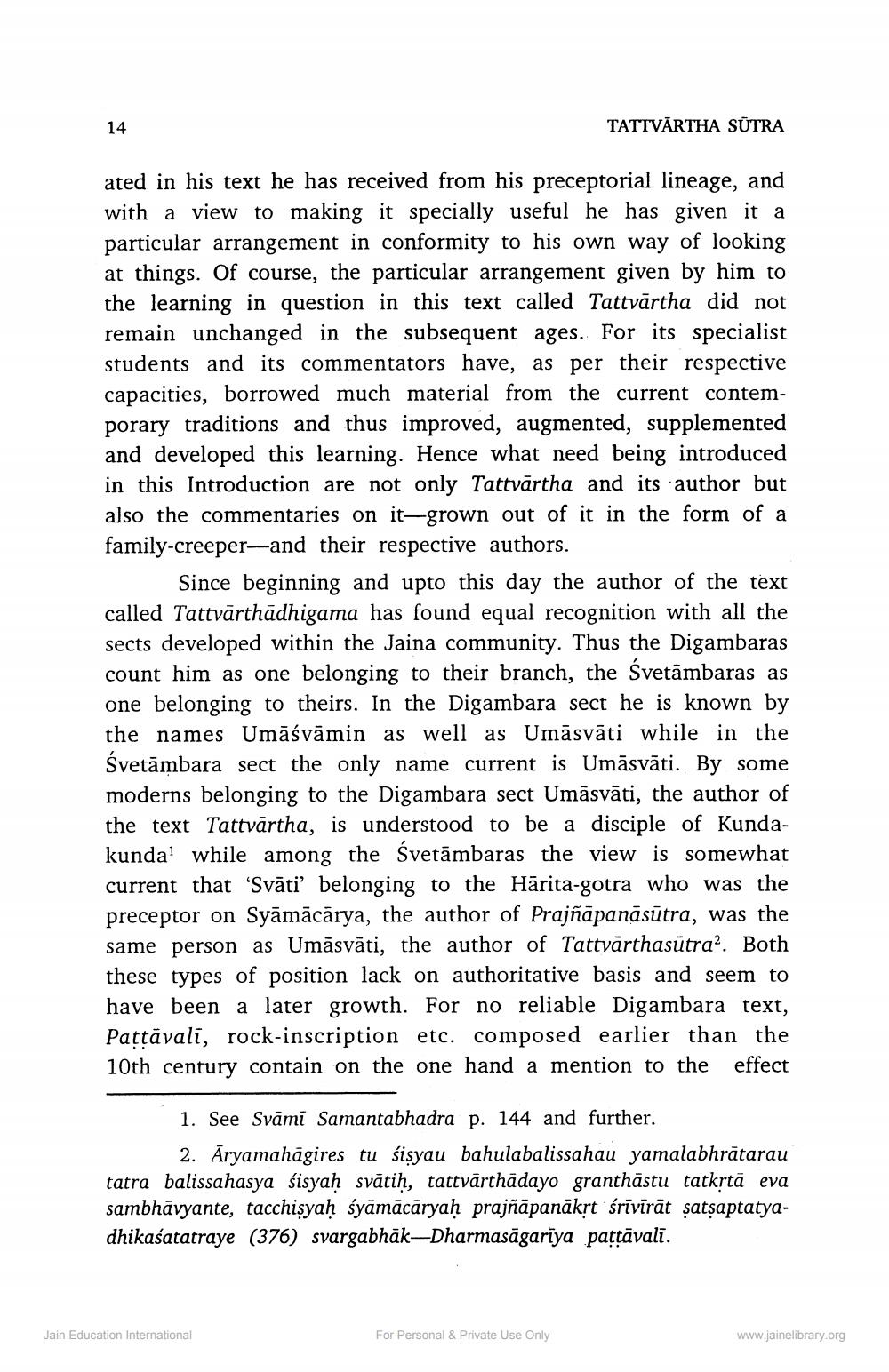________________
14
TATTVĀRTHA SŪTRA
ated in his text he has received from his preceptorial lineage, and with a view to making it specially useful he has given it a particular arrangement in conformity to his own way of looking at things. Of course, the particular arrangement given by him to the learning in question in this text called Tattvārtha did not remain unchanged in the subsequent ages. For its specialist students and its commentators have, as per their respective capacities, borrowed much material from the current contemporary traditions and thus improved, augmented, supplemented and developed this learning. Hence what need being introduced in this Introduction are not only Tattvārtha and its author but also the commentaries on it-grown out of it in the form of a family-creeper—and their respective authors.
Since beginning and upto this day the author of the text called Tattvārthādhigama has found equal recognition with all the sects developed within the Jaina community. Thus the Digambaras count him as one belonging to their branch, the Svetāmbaras as one belonging to theirs. In the Digambara sect he is known by the names Umāśvāmin as well as Umāsvāti while in the Śvetāmbara sect the only name current is Umāsvāti. By some moderns belonging to the Digambara sect Umāsvāti, the author of the text Tattvārtha, is understood to be a disciple of Kundakunda! while among the “vetāmbaras the view is somewhat current that "Svāti' belonging to the Hārita-gotra who was the preceptor on Syāmācārya, the author of Prajñāpanāsūtra, was the same person as Umāsvāti, the author of Tattvārthasūtra?. Both these types of position lack on authoritative basis and seem to have been a later growth. For no reliable Digambara text, Pattāvalī, rock-inscription etc. composed earlier than the 10th century contain on the one hand a mention to the effect
1. See Svāmi Samantabhadra p. 144 and further.
2. Āryamahāgires tu sisyau bahulabalissahau yamalabhrātarau tatra balissahasya śisyah svātih, tattvārthādayo granthāstu tatkrtā eva sambhāvyante, tacchisyaḥ śyāmācāryaḥ prajñāpanākst śrīvīrāt satsaptatyadhikaśatatraye (376) svargabhāk-Dharmasāgariya pattāvalī.
Jain Education International
For Personal & Private Use Only
www.jainelibrary.org




